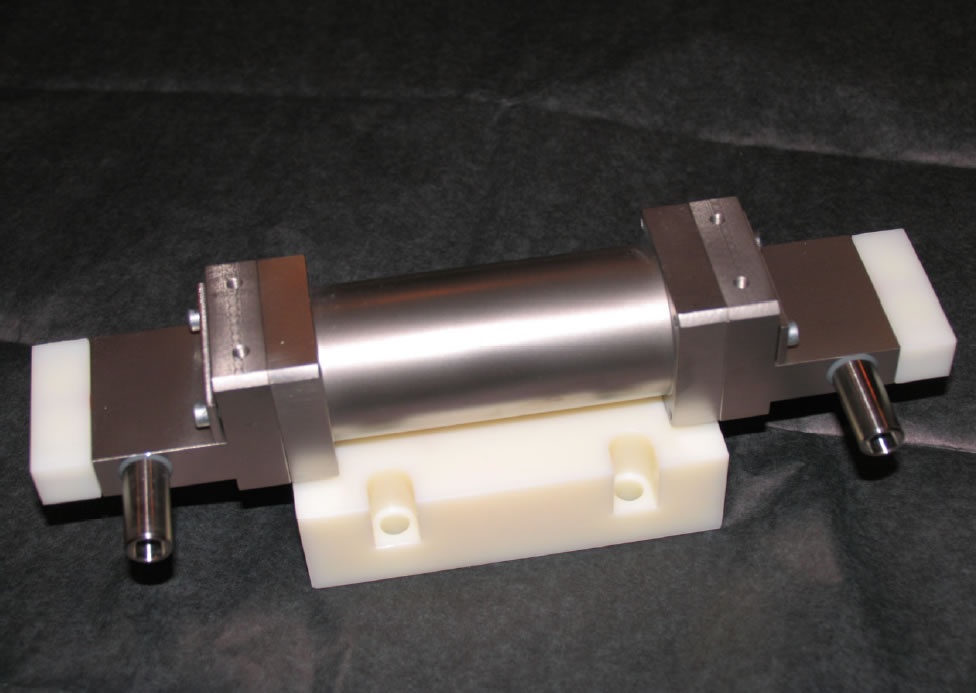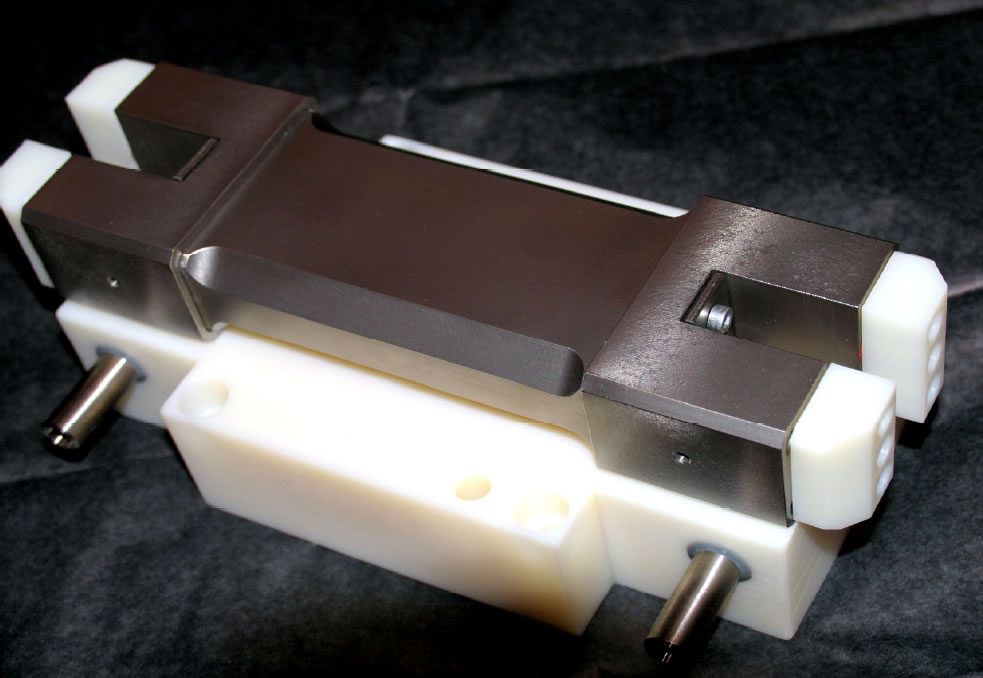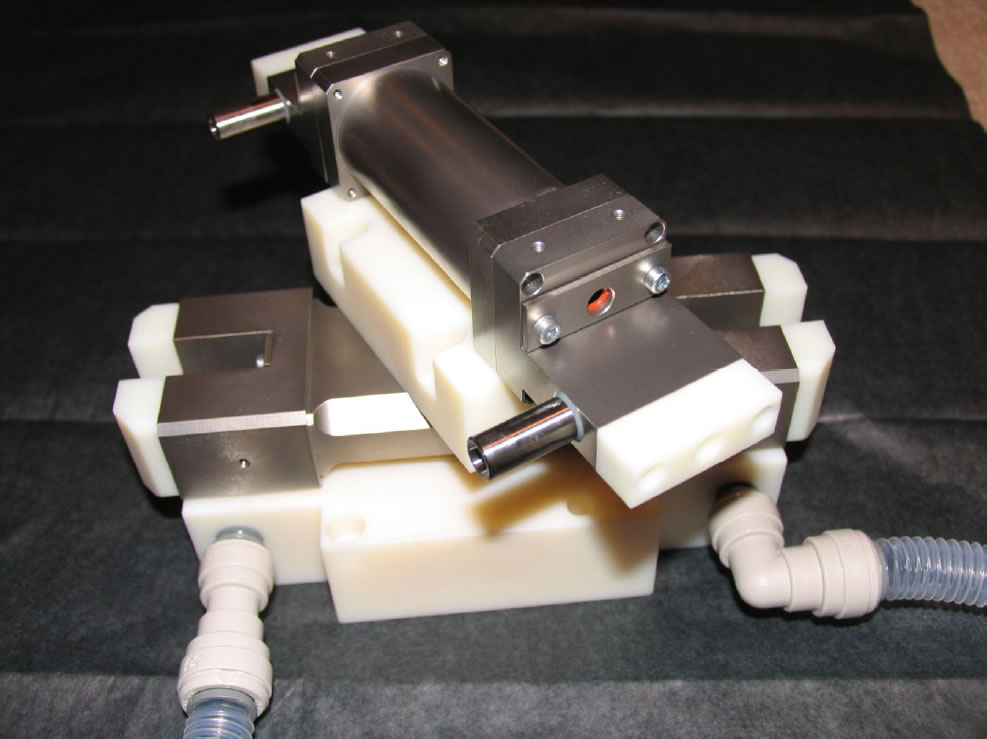Diffused, Close‐Coupled Design with BaSO4 Reflector. Input power rating ranges from 800 to 1500W, which can be increased ~2.0–2.5kW in a custom-configuration where the reflector is cooled separately. The chambers can be configured in all possible combinations: single rod/lamp, single rod/dual lamps, and dual rods pumped by a single lamp.
Reflector assembly consists of glass or Fused Silica monoblock surrounded by several layers of high-purity BaSO4. The body of the chamber is made from aircraft-grade Titanium alloy with virtually a lifetime of maintenance-free operation. The cavity is best suited for pulsed Nd:YAG, Nd:YAP, Er:YAG, Er:Glass, Alexandrite, CTH:YAG and other solid-state laser media. Our power chambers have demonstrated overall efficiencies of almost 6.0% for free-running Nd:YAG laser and in excess of 3.0% for Er:YAG laser, providing very high beam quality. These pump cavities can be used with laser rods ranging from 3 x 64 mm to 12.7 x 150 mm.
Diffused Close‐Coupled Pump Chamber with Ceramic-based Reflector. This is the most conventional type of chambers used for high-energy lasers, like Long-Pulse Nd:YAG or Alexandrite Laser for dermatology, where pump energies can reach several kJ (kilo-Joules). At such a high input it’ll be difficult to hold the main seals in a BaSO4-based pump chamber. Therefore priority must be given to the reliability of ceramic reflectors at the expense of efficiency. In order to be able to withstand high power operating conditions the active surface of the reflector must be high-temperature glazed as the ceramic is a porous material. While pure Alumina ceramics reflects ~98.5% in visible and near-IR, reflectivity drops to ~96.5% for glazed ceramics.
Our pump chambers are designed in a way that allows simple replacement of the flashlamp by non-technical personnel without disturbing the alignment. Even if something inside pump chamber requires repair or a replacement, simply by lifting up, the chamber can be disconnected from electrical power and cooling loop. And then it can be placed back on the base without having to realign the resonator or the optical fiber coupling arrangement.
This design has gone through several iterations:
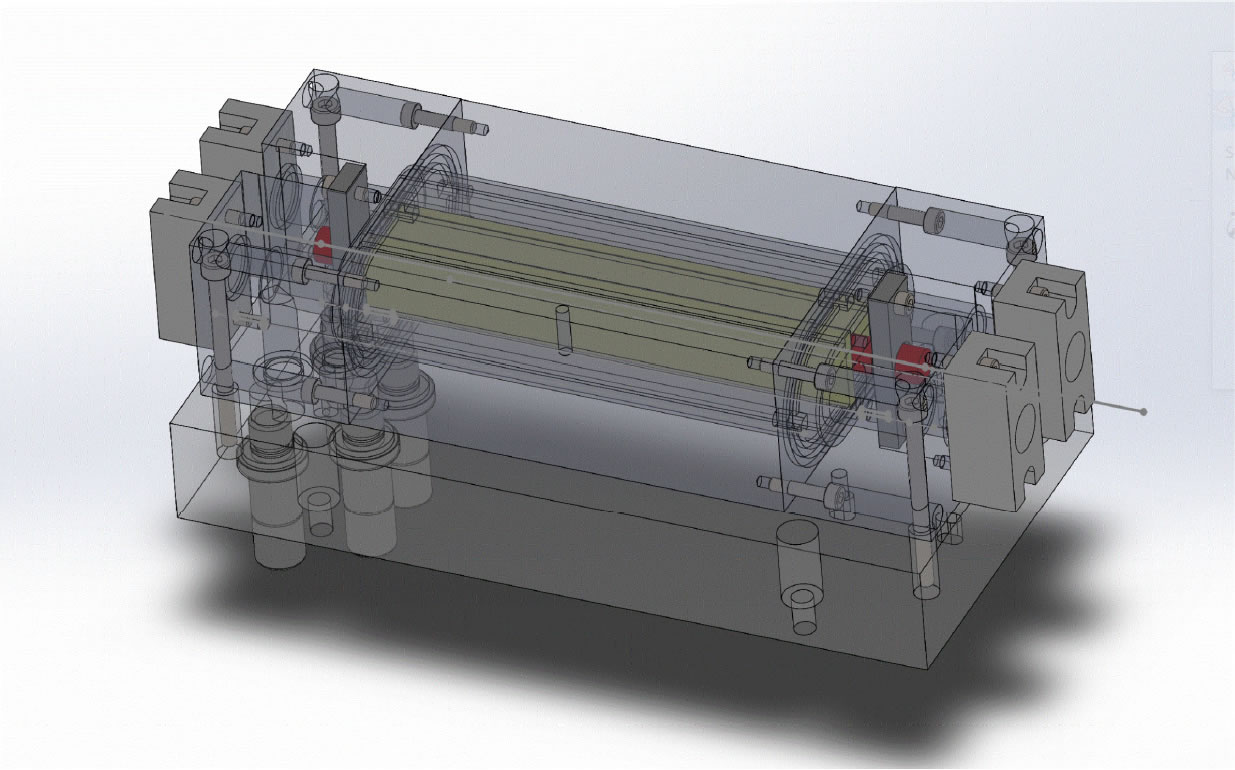
This is the original design with split ceramic reflector and independent flashlamps-rod cooling channels.
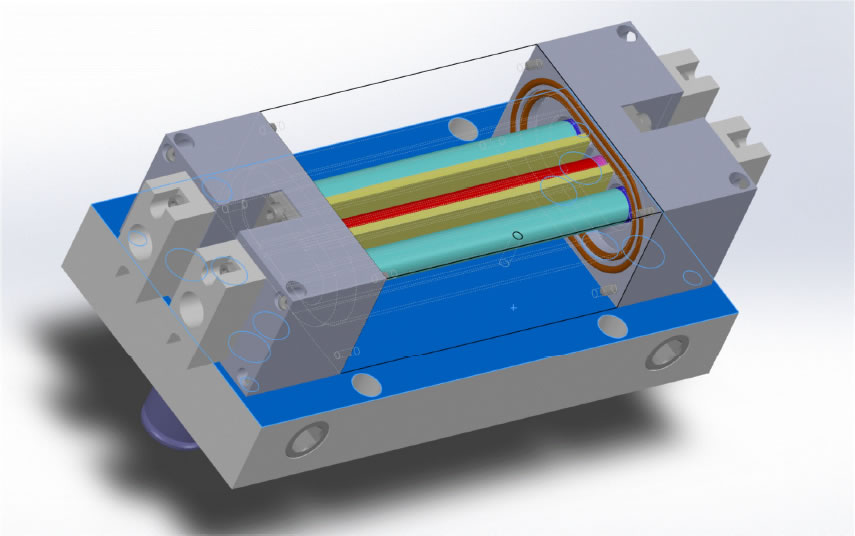
This is the latest generation, with monolithic ceramic reflector, where water flow is first directed through flashlamps’ channels, and then combined in the central laser rod channel, providing additional heating of the Alexandrite rod.
The pump cavity is designed in a very closedcoupled configuration, with the distance between flashlamp’s Quartz envelope and Alexandrite rod’s barrel of only 3.8mm. To achieve high flow rate through the channels with such a restrictive cross-sections, a special cooling system with high output pressure was designed.
Hard-UV radiation from the flashlamps’ emission spectrum was virtually eliminated by using thick (2.5mm) filter plates of fused silica with high doping level of Ce-ions. This is a critical issue for the UV solarization-susceptible material like Alexandrite. Due to aggressive pumping geometry and additional heating of the laser rod by the water having passed through flashlamps’ channels, lasing slope efficiencies on the order of 4.0% have been achieved.
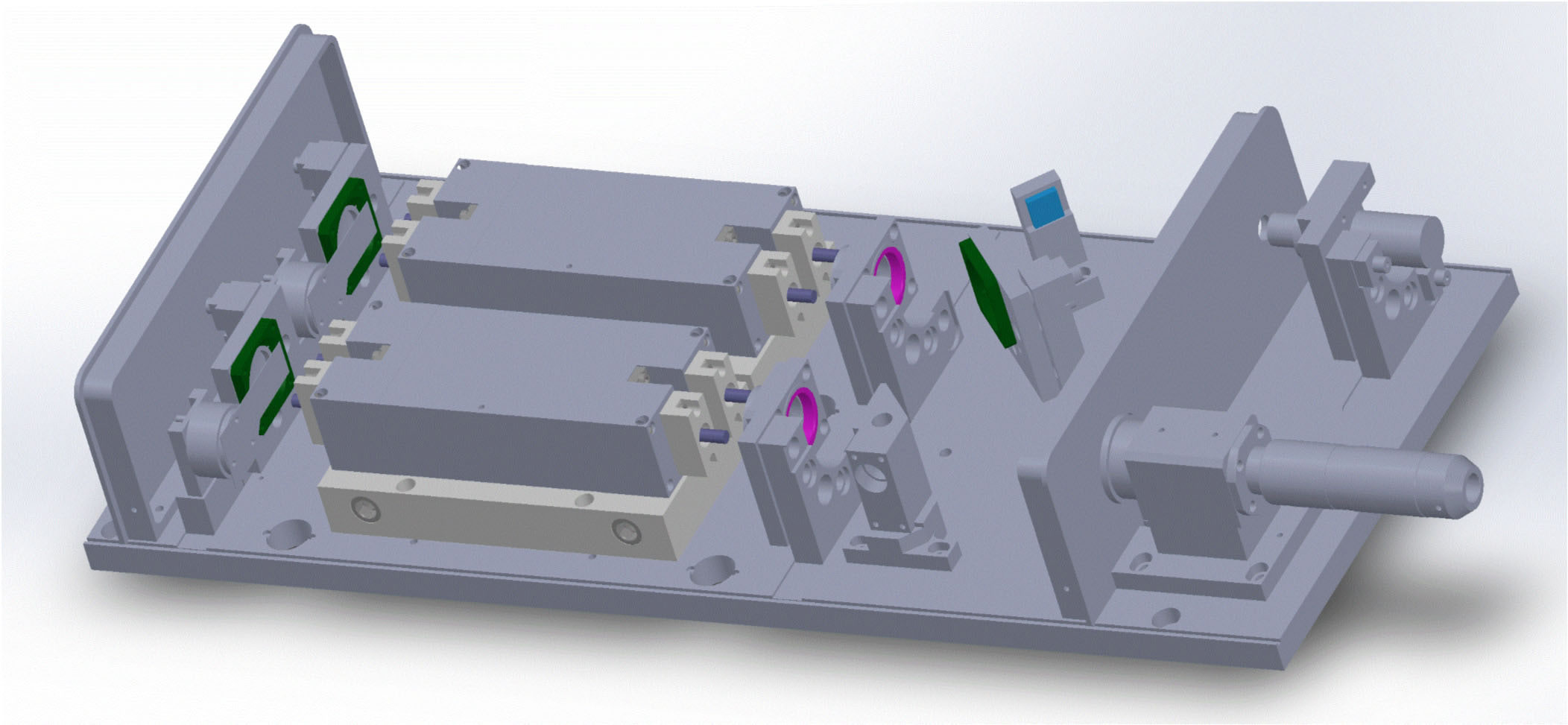
Example of the dual Alexandrite/Nd:YAG Laser Head, designed on the basis of this Pump Chamber.
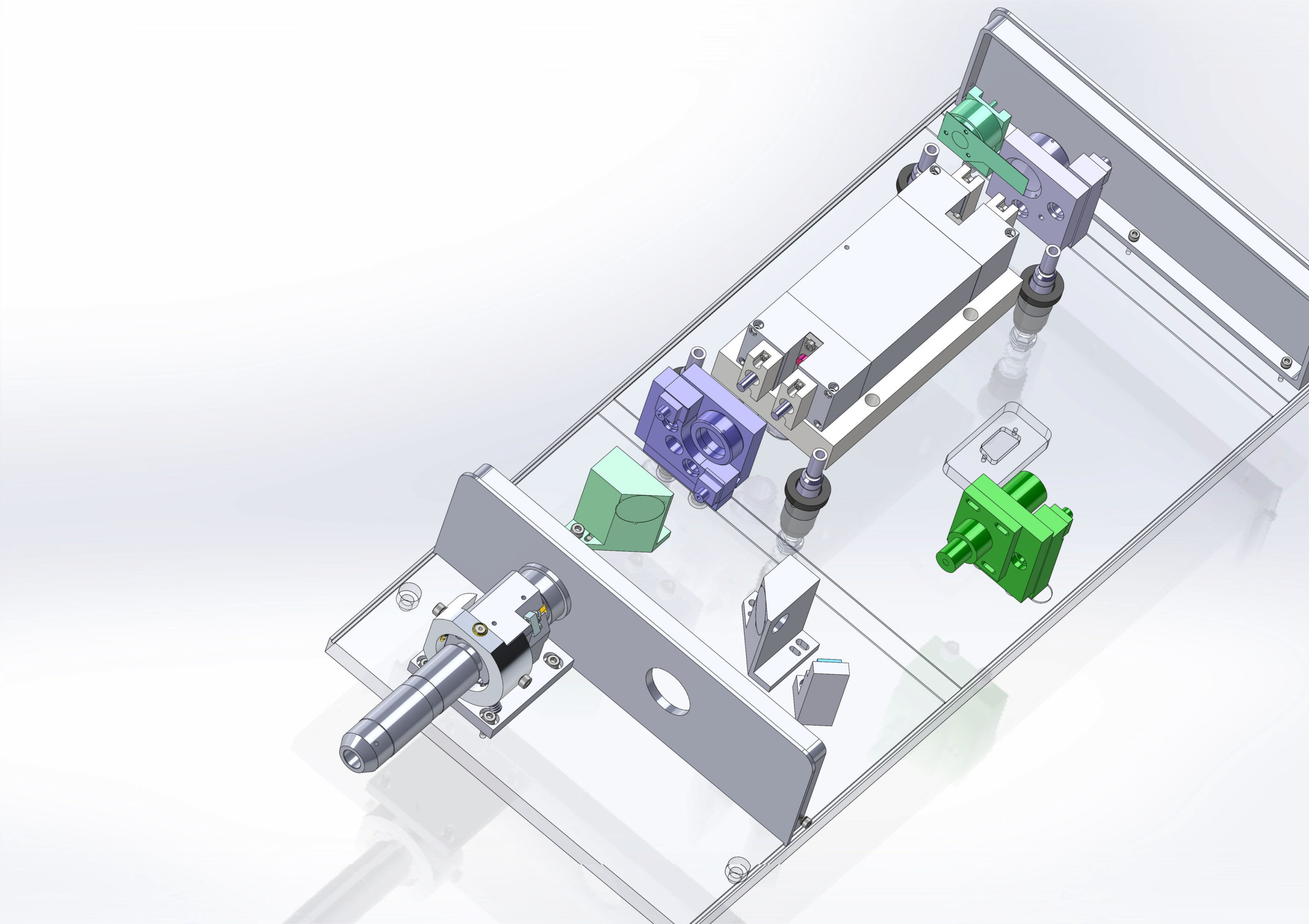
Another example of the Alexandrite-only Laser Head, designed on the basis of new dual-flashlamp Pump Chamber.

